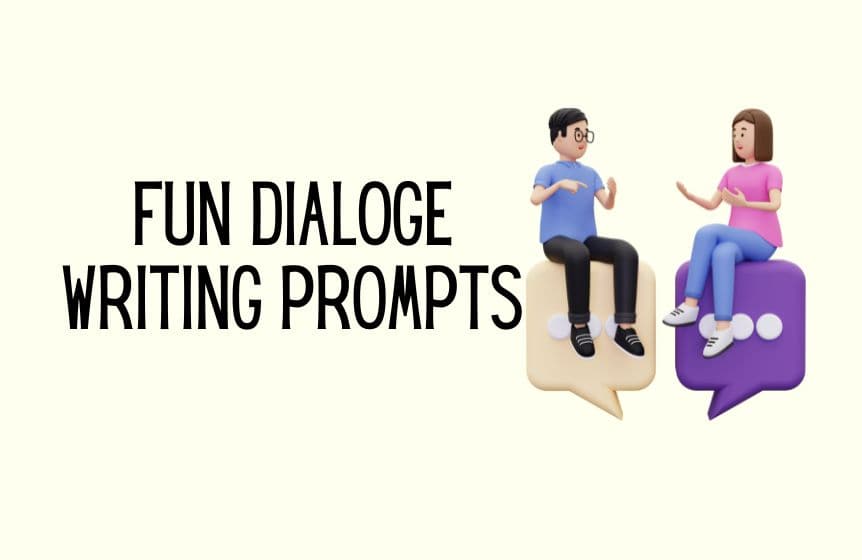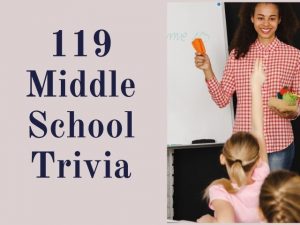Today’s blog post delves deep into the world of dialogue writing topics. As someone who worked as a teacher for diploma-level students, I often witnessed the transformative power of dialogue writing exercises in igniting creativity. Let’s dive into this fascinating topic!

Dialogue Writing Topics for Students
Every time I step into a classroom or conduct an online session, I’m reminded of the importance of dialogue writing topics. These topics act as a great way to kickstart the writing process. Here are some dialogue writing topics tailored for students:
- Job Interview: A recent graduate nervously waits for their turn at a job interview. They strike up a conversation with an older applicant who has been out of work for a long time.
- Write about the contrasting emotions and perspectives of the two applicants.
- Lost and Found: Two strangers find themselves arguing over a misplaced wallet at a coffee shop, each claiming it’s theirs.
- Write about how the two strangers find common ground and resolve the situation.
- Parent-Teacher Meeting: A teacher discusses a student’s recent behavioral changes with a concerned parent, hinting at an unknown incident that happened last week.
- Write about the underlying reasons for the student’s behavior and the potential outcomes of the meeting.
- Hospital Waiting Room: Two individuals bond in a hospital waiting room. One is awaiting the birth of their first child, while the other is waiting for news about a best friend’s surgery.
- Write about the depth of their conversation and how they comfort each other during the waiting period.
- First Date after a Breakup: After a long time, a person finally agrees to a blind date, only to discover they share mutual friends with their ex-partner.
- Write about the awkwardness of the situation and how they navigate the evening.
- Bus Stop Chat: Early in the morning, two neighbors who’ve never spoken before find themselves alone at the bus stop. They discuss the changes in the neighborhood and the new family that moved in last night.
- Write about how this chance encounter leads to a newfound friendship.
- Grocery Store Encounter: While shopping, two individuals reach for the last item on sale. They strike a conversation about their shared need for the item.
- Write about the humorous negotiation that ensues and the eventual compromise they reach.
- Unexpected Reunion:At a local bookstore, two old schoolmates bump into each other after a decade apart.
- Write about the flood of memories, the awkward silences, and the catching up they do amidst the rows of books.
- Late Night Train:Two passengers find themselves on a near-empty late-night train. One is an insomniac, and the other is returning from a long work shift.
- Write about their conversation on dreams, sleep, and the stillness of the night.
- Yoga Class: A regular yoga attendee helps a newcomer adjust their posture during a class. Write about the bond they form, discussing the importance of mental peace, physical health, and self-care.
- Pet Park Encounter: Two pet owners strike a conversation at a park when their pets start playing together. Write about the hilarious anecdotes they share about their pets’ quirks and behaviors.
- Lost Tourist: A tourist approaches a local for directions and ends up getting a brief history of the town’s most famous landmark.Write about the tourist’s fascination and the local’s pride in their hometown.
- Library Study Session: Two students studying for finals at the library share a table and end up discussing their study techniques and future aspirations. Write about the stress of exams and the hopes and dreams of the two students.
- Laundromat Meet: While waiting for their laundry, two strangers bond over the odd socks that always seem to go missing.Write about the light-hearted banter and the shared frustrations of daily chores.
- Community Workshop: Attendees at a community pottery workshop discuss the therapeutic nature of working with clay. Write about the calming effects of creating something with one’s own hands and the stories that emerge from the pottery they shape.
Students, take inspiration from these scenarios and craft dialogues that shed light on the intricacies of human connection, the moments of serendipity, and the simple joys of everyday interactions.
Related : Creative fairy tale writing prompts

Dialogue Writing Exercises
Now, let’s focus on some exercises that can help improve dialogue-writing skills:
- Dialogue Tags: A great exercise is to write a paragraph of dialogue and practice using dialogue tags. Remember, good dialogue doesn’t always need tags, but when used, they should be natural and meaningful.
- Punctuation Marks: Emphasize the importance of quotation marks and other punctuation marks in dialogue. A fun exercise is to provide students with a line of dialogue and ask them to punctuate it in different ways, leading the conversation in a different direction each time.
- Inanimate Object Conversations: Encourage students to write dialogues between inanimate objects. This can be an engaging way to explore a character’s voice and inject a little bit of humor.
- Filler Words: Realistic dialogue often contains filler words like “um”, “like”, and “you know”. Challenge students to write a dialogue brief using filler words naturally.
Here are some dialogue writing exercises that can be fun to do.
- Missing Tags:
- Write a page-long dialogue between two characters without using any dialogue tags (e.g., “he said”, “she replied”). The challenge is to make it clear who is speaking solely through the content and rhythm of the dialogue.
- Object Conversation:
- Choose two inanimate objects (e.g., a clock and a teacup). Write a dialogue as if these objects were having a conversation. What would they say to each other?
- Genre Swap:
- Take a dialogue from a romance novel and rewrite it as if it were in a science fiction setting. Notice how the setting and genre can change the tone and content of a conversation.
- Emotion Play:
- Write a short dialogue where one character is trying to hide their feelings (e.g., sadness, anger, or excitement) from another. Focus on subtle cues and subtext.
- Restriction Challenge:
- Craft a dialogue where characters can only speak in questions or, alternatively, where they cannot ask any questions at all.
- Flashback Dialogue:
- Create a conversation between two characters reminiscing about a shared past event. Use the dialogue to reveal information about the event without directly stating what happened.
- Monologue to Dialogue:
- Take a monologue from a play or novel and transform it into a dialogue between two characters. How does the dynamic change when another voice is added?
- Cultural Exchange:
- Write a dialogue between two characters from vastly different cultural backgrounds. Highlight the misunderstandings, curiosities, and learnings that can emerge from such interactions.
- Age Difference:
- Craft a conversation between an elderly person and a child. Focus on the differences in perspective due to their age gap.
- Setting Shift:
- Write a dialogue that takes place in a loud environment, like a busy market or a concert. Then, rewrite the same dialogue in a quiet setting, like a library or a secluded park. Notice how the setting influences the dialogue’s tone and content.
- Character Swap:
- Take a dialogue you’ve written previously. Swap one character’s lines with another character from a different piece of writing. Observe how the dialogue changes in tone and meaning.
- One Word at a Time:
- With a partner, write a dialogue where you can only say one word at a time, going back and forth. This exercise can be both challenging and hilarious.
Dialogue Ideas for Dramas
Dramas require meaningful dialogue that propels the plot forward. Here are some dialogue ideas for budding playwrights:
- High Tension: Create a scenario with high stakes. Maybe a one-night stand between two characters with opposing views on a specific situation, or a casual conversation that reveals a dark secret.
- Background Information: Use dialogue to provide background information without making it sound like an information dump. For instance, a conversation between two old friends reminiscing about their new years spent together.
- Natural Conversation: The best way to write effective dialogue is to mirror natural conversation. Dialogue exercises, like recording a casual chat and then transcribing the spoken words, can be helpful. This is an excellent way to understand filler words, incomplete sentences, and the natural rhythm of actual speech.
Conclusion:
The art of dialogue is a cornerstone of captivating storytelling. Through dialogue, characters come alive, plots advance, and themes resonate.
As a teacher, I’ve frequently used these dialogue exercises with my students to stimulate their creativity. It’s fascinating to observe them engage in conversations that reflect opposing yet constructive ideas.
It not only enhances their understanding of character dynamics but also gets their creative juices flowing. These exercises serve as both a challenge and a tool, pushing students to delve deeper into the complexities of human interaction.
So, whether you’re a budding writer or someone looking to refine your dialogue-writing skills, remember that practice, coupled with a dash of imagination, can work wonders. Happy writing!
Was this helpful?
Good job! Please give your positive feedback
How could we improve this post? Please Help us.



